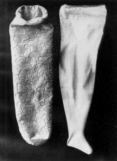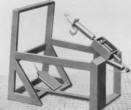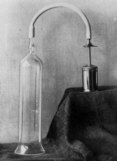| Library and Collection | |||||
| Even before the founding of the Institute, Hirschfeld and the WhK (Scientific-Humanitarian Committee - Wissenschaftlich-Humanitäres Komitee) collected objects and books "on homosexuality and related subjects"). In 1919, WhK-members were asked to donate books and money in order to turn the library into "a centre in this specialist field of sexual science". Ludwig Levy-Lenz wrote in retrospect about the library: "The Institute's library was the largest one in the world on sexual science. There was hardly a book on sexual science or related fields that we did not possess." We do not have any more precise information, so that the size of the library remains open to speculation. 1 The Institute's archives and sexual museum assembled objects, writings, and photos that bear witness to the diversity of all things sexual. Giese's guided tours made the sexual museum a popular attraction. The purpose was to educate the visitor, while the presentation of the objects played on people's interest in the strange and curious: just as in a museum of natural history exotic creatures and beasts stuffed in threatening attitudes impress the beholder, the sexual transitions 14 and criminals 15 , now rendered "harmless", evoked pleasure and horror. There is a similarly ambiguous quality to the way in which books and essays were illustrated with images, exhibitions were mounted, and pictures were employed for "purposes of illustration and teaching within the framework of training and further education courses". Levy-Lenz, in his Erinnerungen eines Sexualarztes (Memoirs of a Sex Doctor) (1954), wrote: "In addition, unpublished manuscripts, memoirs, diaries of patients and the entire correspondence of the write-in counseling have all been collected in these archives. The Institute museum was the only one of its kind in the world. Thousands of photographs could be viewed there: pictures of sex criminals, neurotics, the mentally disturbed; pictures of eccentric sexual practices, perversions, and the instruments and tools used for them; historical photographs, entire files on brothels from all time periods and from throughout the world; photos of prostitutes, homosexual men, tranvestites, lesbians, exhibitionists, sadists, masochists, pimps, kleptomaniacs, and many, many more. ... In short, all that was collected here was like a labyrinth of human passions and aberrations! We had countless objects that had served to satisfy sexual fetishisms: a collection of about a hundred pairs of women's kid leather shoes in all colors; boots, including some that were laced-up well past the thigh. In the same museum room there was an exhibition case filled with braids and locks of hair that one, single braid-cutter had cut off and collected. From a panty fetishist we inherited a selection of the most beautiful, varied, exquisite, and intimate pieces of lingerie that have ever been worn. ... One of the strangest collections we had were the abortion instruments that women from all eras and peoples had used to perform abortions. The exhibition was rounded off with precise statistics that interested scholars from all over the world. In a separate room, we had a sizable collection of pornographic books that spoke of healthy and sick love, in pictures and in writing, in prose and in verse, in all languages. . . ."
|
|||||
| X | ||
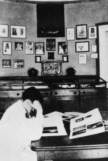 | ||
| 1 | ||
 | ||
| 2 | ||
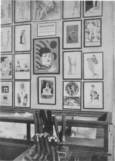 | ||
| 3 | ||
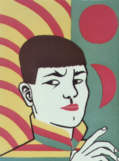 | ||
| 4 | ||
 | ||
| 5 | ||
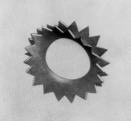 | ||
| 6 | ||
 | ||
| 7 | ||
 | ||


